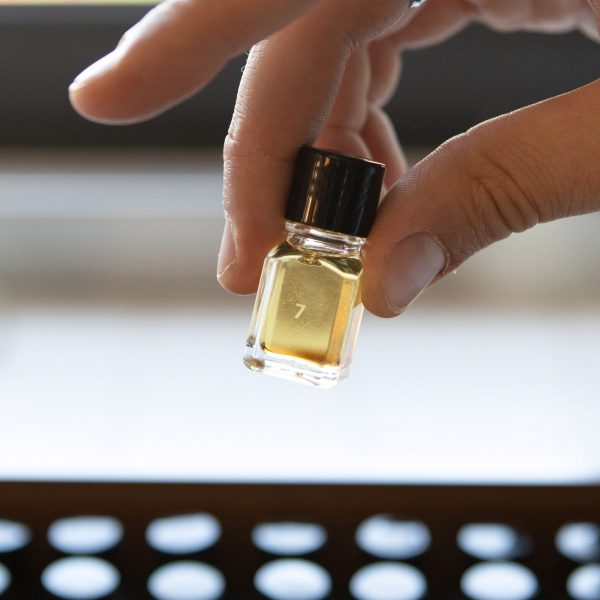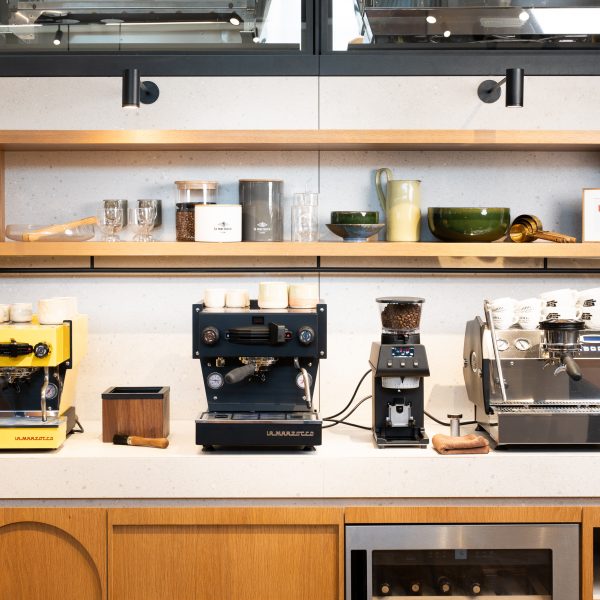Blog
I would say my history with La Marzocco is quite long because I started out as a barista. Once I finished high school, I would have liked to work in a bar, but I was still underage. Walking around the city of Oslo, I noticed a sign on a coffee shop window: if it wasn’t the first one, it was one of the first five specialty cafè opened in the city. I didn’t even drink coffee then, but I got the job because they desperately needed someone. After a few hours of training on the coffee shop roastery, I found myself alone behind the counter full time. Luckily, in Norway, the Espresso culture was pretty new, so not a lot of people knew about it, not even the customers who came into order.
At first, I didn’t drink coffee, but after a while with my mentor Willie, I started experimenting with what I had: the espresso machine was old, small, and cheap, and the grinders were terrible. But after a while, I began trying new equipment: new espresso machines, grinders, water filters, and everything related to it. It was fun, and I learned so much that the coffee shop owner asked me to participate in the barista competition that SCAE in Norway was planning. I think it was the second edition: it was a new and unknown event. I agreed to participate since I didn’t have anything to lose. We had the chance to choose between using a La Marzocco or another espresso machine, which I had been working with, and I decided on the second espresso machine. I arrived at the semifinals. In the final rankings, there were three finalists; everyone else, including me, was in fourth place. Maybe I was last, but I received excellent feedback from the judges, so I decided to try again the following year. Since Robert Thorensen, the winner, used a La Marzocco, I also chose to use that. I positioned myself second and asked if I could have a La Marzocco at my workplace to prepare for the next competition. The coffee shop owner agreed, though reluctantly. They bought a used Linea Classic from the competition. I still felt new to this world, but in the meantime, we opened a second coffee shop where we had La Marzocco, and I used to practice every time I could. I came in second again, even though I felt like I was the best barista. I was young and full of myself. Looking at myself in the videos, I realized that being a barista is not just about technique or knowing how to handle the machine; you have to understand how to create a good experience for the customer. In the competition, I had completely forgotten about this, so I began to focus much more on this aspect.
During the Barista Championship in Oslo in 2002, I had met Piero Bambi, and since my mother and sister came to see me compete, I introduced them to Piero. It created a very strange situation because my sister thought he was my grandfather. In fact, they looked almost identical and even wore the same glasses. But my grandfather had passed away a couple of years earlier!
That same year, I took my first trip to Italy with my friend and colleague, and we also visited La Marzocco. I met Piero, Kent Bakke, and Ron Cook. Since at the trade shows the sales people were always in suits and ties, we ironed our shirts and wore our good pants. It was very hot, or we would have worn jackets too. When we arrived at the factory, it seemed closed. We knocked, and Piero opened the door: he was wearing a t-shirt!
There’s a very famous animated movie here, Flåklypa Grand Prix, made in stop-motion: it’s about an inventor who works in a small garage. Once we entered the factory, it felt like stepping into that movie: tools everywhere, old dusty machines around, boilers all over the place. Compared to other factories I’ve seen, La Marzocco was a small workshop, and Piero was excited to show us everything he was working on, even the oddest things: the mechanical paddle, new ideas for pre-infusion. We were struck by his passion for the machines’ mechanics but also for coffee. He wanted to improve the machine so the coffee would taste better. He offered us coffee from his favorite local roastery. He had a round, all-gold machine. I think it was an FB70, and there was a huge grinder that looked like a spaceship they had restored. It was an awesome visit.
They set the temperature with a small screwdriver to test all the thermostats, which were still mechanical and calibrated to the same temperature before going into the machine. He had many small interesting inventions for quality control on the machine that were very fun to discover. We learned so much about the machines and also visited large roasteries like Illy.
I wanted to roast my own coffee, not just for the competition but also for the coffee shop. Inspired by everything I had learned in Italy, I started using the roaster, and for a year, I focused on service, roasting, and cupping. Then, I went back to Italy in 2003. That very year, during the Nordic Barista Cup in Denmark, I met Guido Bernardinelli, who told us he had started working for La Marzocco.
In 2004, I brought my blend to the competition. It had a completely different flavor profile from the typical Norwegian espresso, which was almost always very dark with strong and aggressive flavors. I wanted fresh and fruity notes: I started using Colombian coffees, Brazilian naturals, and Kenyan coffees. In the 2004 competition in Trieste, I won and it was fantastic. Of course, using a La Marzocco machine. From then, I started my way as an “educator,” traveling and holding seminars. With more resources, I began investing in development and equipment. By the end of 2005, I left the coffee shop chain I was working for and started planning my own business. Back then, the internet was very lively, with lots of interaction, forum discussions, and blogs. Before all this, you learned from books, videos, or by visiting factories directly, but around 2004-2005, we were all very active on the internet. La Marzocco used this resource to improve the machines, develop new things, and involve us in designing the Strada. We only had a little knowledge as baristas, but we had a lot of experience. Surely today, the suggestions would be different.
We came to Italy a couple of times to work on the machine and test it. Today, we would be much more methodical, conducting tests and measurements, but back then, we needed to figure out what to look for; refractometers had just been introduced, and we were still at the beginning of everything.
We had a Strada, but we got a Linea PB when it came out. Initially, we had an FB80. Piero had customized it for us, with single boilers for the two groups. He also did something with the solenoids to experiment with pre-infusion, but none of us understood how to use it properly, so we always used it the old-fashioned way. Later, it was sold to one of my clients, who kept it for a long time. Years later, Enrico Wurm contacted me to dismantle it and understand what Piero had done, but we couldn’t find it.
We’ve always used La Marzocco because it’s reliable and consistent, especially now with the scales. And we’ve never had to stop because of the machine. For me, today, the quality of an espresso is determined by the quality of the green coffee and how it’s roasted. The equipment is no longer at the center, although it has improved a lot. Today, we have a Linea PB X, and I don’t think we’ll change it again. In fact, I also have a GS3, which was used by the Noma restaurant for at least 10 years. It’s perfect for training.
When I opened my roastery in 2006, the local La Marzocco distributor, Patrick, was starting his business too. Starting together allowed us to compare notes and talk about the industry. Today, Patrick is our partner for all the equipment, but we’re also very good friends and hang out in our free time. Initially, we had the roaster inside the coffee shop: we liked that our customers could taste the coffee we made and served just the way we wanted. Later, we moved the roaster, and the place became a coffee shop, which, from May to October, is a tourist destination. But today, our business imports, roasts, and exports green coffee. Today, we focus on research into raw materials.
Now, I mainly deal with purchasing green coffee, and I rarely conduct training for my baristas. I handle quality control of the roasting process and the plantation in Colombia where the coffee is grown, so I no longer consider myself a barista, although one stays a barista forever. One of the most fun days of the year is when we celebrate our anniversary at the coffee shop at the end of June, and I’m behind the counter making espresso. Even though I don’t do it every day anymore, I know exactly all the movements I need to make. It’s like riding a bike; you can’t forget how to do it once you’ve learned.
I don’t go to trade shows anymore, but back in the day, I used to go, and I remember that every time we met at a trade show, Piero would always show us the new things he had. Our community was very, very small, and at every event, you’d always find the same people!
The last time I was at La Marzocco was in 2008 or 2009, and then I went to Scarperia once or twice. I don’t have any photos, and it’s also very strange, but it’s because we were starting to have iPhones, and we didn’t take photos with cameras anymore, so somewhere, I probably have photos I don’t remember. I hadn’t remembered that I also have an FB70 with one group, which I think was only produced in two copies! The first one went to Denmark, to Jan Sandrik, the other I still have, and I still use it sometimes. It’s in our cupping room, and it still works perfectly.
It’s a kind of original Linea because it’s so simple to repair; it’s a workhorse, an excellent machine to work on. And I still have an orange book. Really archival material!



